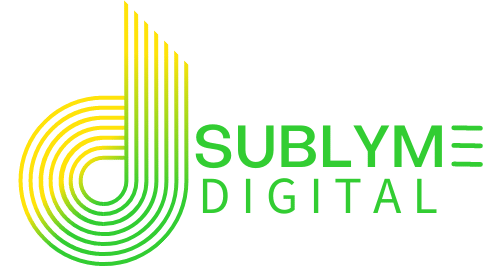How Google’s RankBrain Interprets Search Intent
You know what? Google’s search algorithm is like a detective—it’s always trying to figure out what you really mean, even when your query is vague or oddly phrased. That’s where RankBrain comes in.
Here’s the thing: RankBrain is Google’s AI-powered machine learning system that helps the search engine understand the intent behind user queries. It’s like having a super-smart assistant that can read between the lines and deliver exactly what you’re looking for.
In this blog, we’ll dive deep into how RankBrain works, why it matters for SEO, and how you can optimize your content to align with its capabilities. Whether you’re a marketer, business owner, or curious reader, this guide will help you understand how RankBrain enhances search intent understanding.
Key Takeaways:
- RankBrain is Google’s AI-driven machine learning system designed to interpret search intent.
- It analyzes user behavior, context, and query patterns to deliver the most relevant results.
- Optimizing for RankBrain involves creating user-focused, high-quality content that answers specific questions.
- Long-tail keywords, conversational tones, and semantic relevance play a critical role in improving RankBrain rankings.
- Understanding RankBrain helps businesses align their content strategies with user intent for better visibility.
What is RankBrain?
The Basics
Let me explain. RankBrain is part of Google’s overall search algorithm, and it’s specifically designed to interpret search intent. Think of it as the brain behind the search engine that helps Google deliver results even when the query is ambiguous or unfamiliar.
For example, if someone searches for “best coffee spots near me,” RankBrain doesn’t just look for pages with those exact words. Instead, it considers the user’s location, past search behavior, and even synonyms like “cafes” or “coffee shops.”
Why RankBrain Matters
Honestly, RankBrain is a game-changer for SEO. It’s not just about keywords anymore—it’s about context and intent. This means that businesses need to focus on creating content that answers real questions and solves real problems.
Think of it this way: If traditional SEO was about finding the right puzzle pieces, RankBrain is about seeing the whole picture.
How RankBrain Understands Search Intent
1. Machine Learning at Work
RankBrain uses machine learning to analyze and adapt to user behavior. It looks at factors like:
- Click-through rates: Are users clicking on your link?
- Bounce rates: Are they staying on your page or leaving quickly?
- Dwell time: How long are they spending on your content?
This data helps RankBrain determine whether a result is relevant and adjust rankings accordingly.
2. Context is Key
You know what? Context is everything for RankBrain. It considers things like:
- User location: Are they searching from a city or a rural area?
- Search history: What have they looked for before?
- Query phrasing: Are they using conversational language or technical terms?
This allows RankBrain to deliver results that are tailored to the user’s specific needs.
3. Semantic Understanding
Here’s the thing: RankBrain doesn’t just match keywords—it understands their meaning. For example, if someone searches for “how to fix a leaky faucet,” RankBrain knows they’re looking for a DIY guide, not a plumbing history lesson.
RankBrain isn’t just about keywords—it’s about understanding the intent behind them and delivering results that truly matter.

How RankBrain Impacts SEO
Content Quality Matters
Honestly, RankBrain rewards content that’s well-written, informative, and user-focused. This means you need to:
- Write in a conversational tone.
- Use headers and bullet points to make your content scannable.
- Answer questions directly and thoroughly.
Long-Tail Keywords are Essential
Let me explain. Long-tail keywords are more specific and often reflect user intent better than broad terms. For example, instead of targeting “shoes,” focus on “best running shoes for flat feet.”
Semantic Relevance
You know what? It’s not just about using the right words—it’s about using the right context. Incorporate synonyms, related terms, and phrases that add depth to your content.
Optimizing for RankBrain
1. Focus on User Intent
Here’s the thing: If you want to rank well with RankBrain, you need to understand what your audience is looking for. Use tools like Google Trends and AnswerThePublic to identify common questions and topics.
2. Create Conversational Content
Honestly, writing for RankBrain is like having a conversation with your audience. Use natural language, short sentences, and a friendly tone to make your content more engaging.
3. Use Structured Data
Let me explain. Structured data helps RankBrain understand your content better. Add schema markup to highlight FAQs, reviews, and other key information.
4. Monitor and Adapt
You know what? SEO is an ongoing process. Use analytics tools to track your performance and make adjustments as needed.
We Build Cool
Success Stories
365 Data Centers
Discover how we rapidly rebuilt and optimized a 30-page website for 365 Data Centers, restoring their online presence and managing digital ad campaigns across key regions to drive engagement and growth.
XTECH Football Pads
Discover how we transformed XTECH Football Pads‘ digital presence, boosting their online sales and tripling website traffic through innovative website development and user experience enhancements.
BeEarth Foundation
Discover how we partnered with the BeEarth Foundation to develop a website that aligns with their mission of sustainability and global engagement. Our work has significantly increased their online visibility and engagement, supporting their efforts to promote sustainable development.
We Recycle Solar
Learn how we illuminated digital success for We Recycle Solar by completely redesigning their website to reflect their leadership in the growing solar recycling industry and implementing strategic digital advertising campaigns that enhanced their visibility at key industry events.
Preferred Home Health Care & Nursing Services
Explore how we elevated the digital presence of Preferred Home Health Care & Nursing Services by enhancing their website for better lead generation, building a dedicated site for staff recognition, and optimizing SEO for their location pages.
What Our Clients Say: Elevating Online Success
FAQs:
Answer: RankBrain is Google’s AI-driven machine learning system that interprets search intent and delivers relevant results.
Answer: RankBrain analyzes factors like context, user behavior, and query phrasing to determine search intent.
Answer: Focus on creating high-quality, user-focused content that answers specific questions. Use long-tail keywords and semantic phrases.
Answer: Long-tail keywords are more specific and better reflect user intent, making them more effective for RankBrain optimization.
Answer: RankBrain primarily impacts complex or ambiguous queries, but its principles influence all aspects of Google’s search algorithm.
Final Thoughts:
Here’s the bottom line: RankBrain has revolutionized how Google understands search intent. By focusing on context, user behavior, and semantic relevance, it ensures that users get the most accurate and helpful results.
But here’s the thing: Optimizing for RankBrain isn’t about gaming the system—it’s about creating content that genuinely helps your audience. When you prioritize quality, relevance, and user intent, you’re not just improving your rankings—you’re building trust and authority.
Let's Build Something Sublyme
Struggling to align your content with RankBrain’s capabilities? Sublyme Digital specializes in creating SEO-optimized, RankBrain-friendly content. Contact us today to get started!



